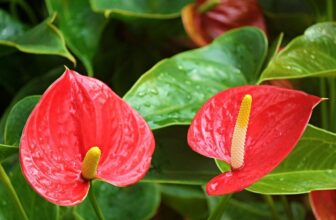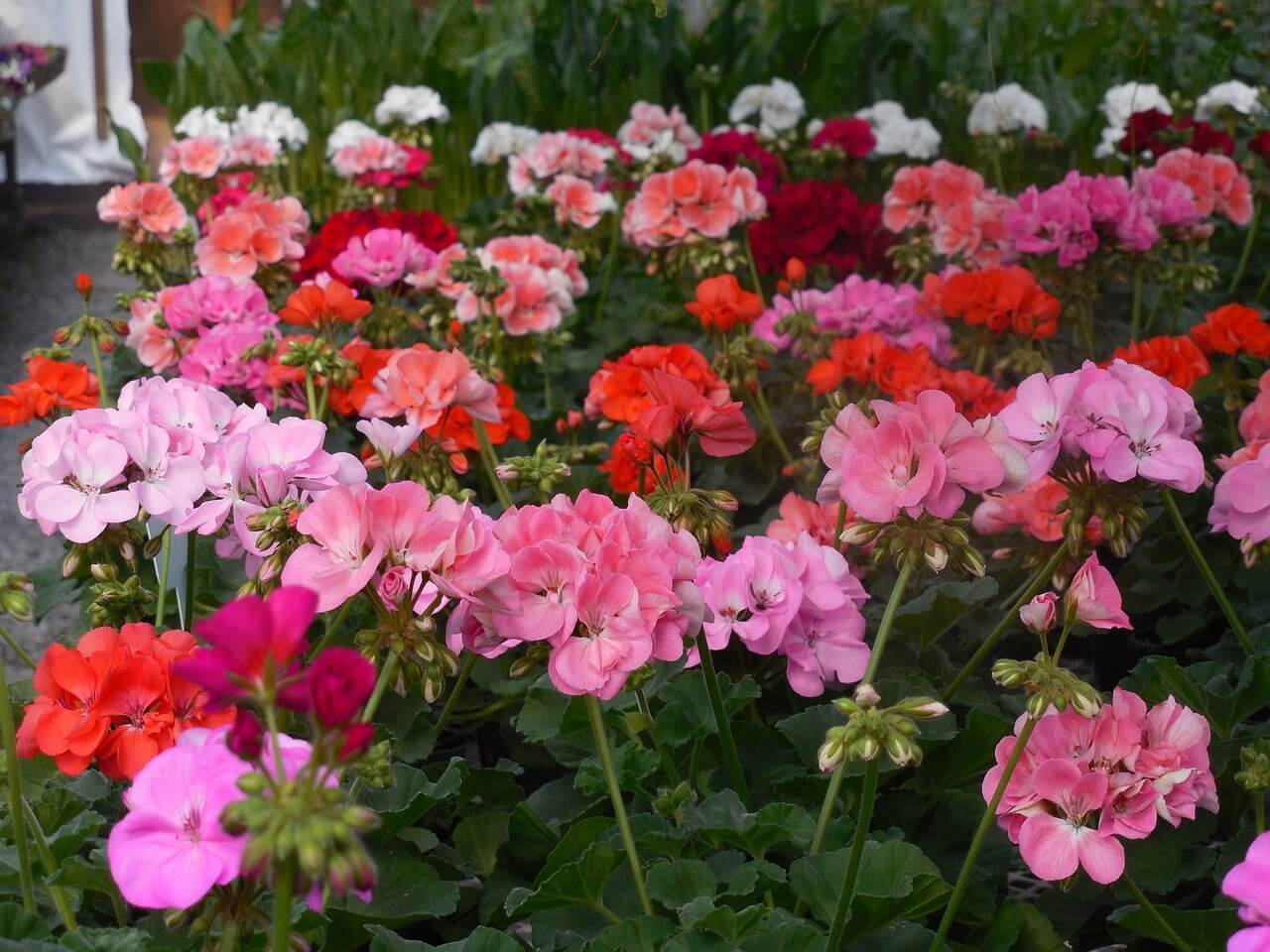
Table of Content
Due to their huge diversity of species and flamboyant blooms, begonias are popularly grown in gardens around the world. Their large, exuberant leaves vary in shape, color, and size depending on the variety and their flowers come in a wide range of colors.
If you’re looking for a colorful addition to your indoor or outdoor garden, why not try growing your own begonias? Here’s what you need to know.
About Begonias
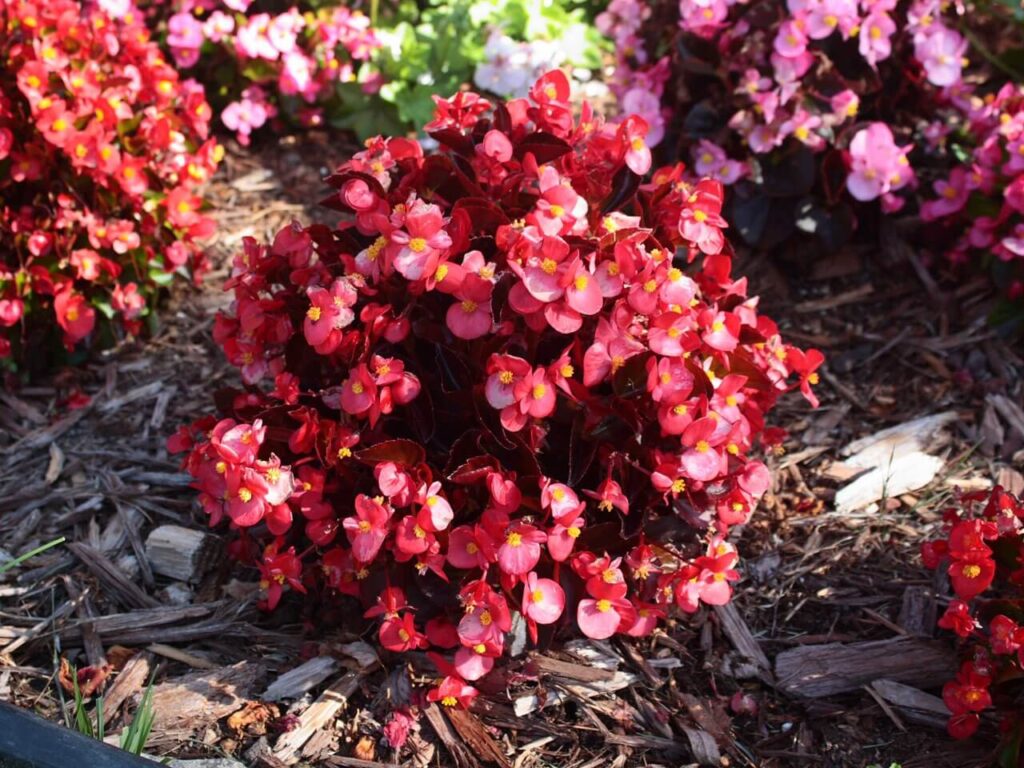
Begonia is a tender flowering plant that’s available in over 2,000 different varieties. These varieties can be grown as either perennials or annuals based on the specific cultivator and the climate zone. However, they’re best grown in moist, tropical to sub-tropical regions with mild weather conditions and bright sunlight.
Begonia flowers are often used to convey and symbolize several positive concepts like gratitude, uniqueness, harmony, and peace. Despite having enormous natural populations of species, many hybrids have been created and are now planted in gardens around the world.
Some of the most popular cultivators of begonias include the following:
- Begonia ‘Glowing embers’
- Begonia ‘Big’
- Begonia ‘Waterfall’
- Begonia ‘Super cascade’
- Begonia ‘illumination’
- Begonia ‘luxurians’
- Begonia ‘Green sparkles’
- Begonia ‘Million kisses elegance’
- Begonia ‘Beauvilia’
- Begonia ‘Apricot shades’
Growing and Caring for Begonias
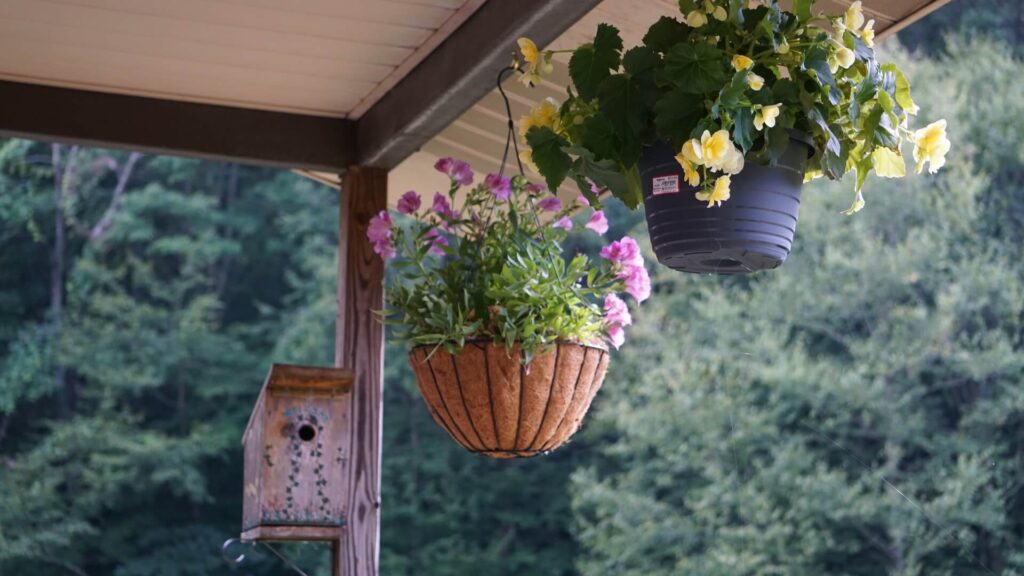
The growing conditions and maintenance of your begonia plants can vary slightly depending on the cultivator you choose. However, there are some important factors to keep in mind when growing them at home.
Choosing the Right Type of Begonia
Before you start planting, it’s important to decide which begonia variety would suit your area. This should be decided on the characteristics of each species and the compatibility with the domestic weather and growing conditions. For example, wax begonias need bright sunlight while tuberous and Reiger begonias prefer little to no direct sunlight.
Some varieties such as wax begonias and Rieger begonias grow upright which makes them ideal for growing in beds or pots. Others like tuberous and rhizomatous begonias are perfect for hanging baskets or to grow as creepers along your walls.
Propagating Begonias
Begonias can be propagated from seeds or leaf and stem cuttings. Of the two, seed propagating is the more difficult since begonia seeds are very tiny. Using stem and leaf cuttings is a lot easier.
From Seeds
As mentioned earlier, propagating begonias from seeds can be a hassle due to their tiny size; not much bigger than dust particles. They also take some time to germinate. Therefore, this method is not ideal for beginner gardeners.
- Buy new seedling trays or containers or if you already have those, disinfect them to avoid any fungal infections.
- Fill the containers with a high quality, sterilized potting mix.
- Scatter the seeds evenly on the soil surface and press them down lightly with your fingers, but don’t cover them up. They need ample amounts of sunlight throughout their germination period.
- Mist the seeds to keep them moist as heavy watering can make them float away and get displaced.
- Cover the containers with a clear polythene sheet to increase humidity.
- Place the containers in a spot where they can get bright sunlight. If you don’t have such a place, you can keep them under grow lights.
- Some begonia varieties will germinate in few weeks while some can take up to months. Putting heat mats under the containers will help speed up germination.
- Always keep the seeds moist and cool. When it needs to be watered, carefully remove the polythene sheet and replace it after misting or spraying the seeds with water.
- Once the seeds have started sprouting, remove the cover and increase the amount of lighting you provide them.
From Leaf Cuttings
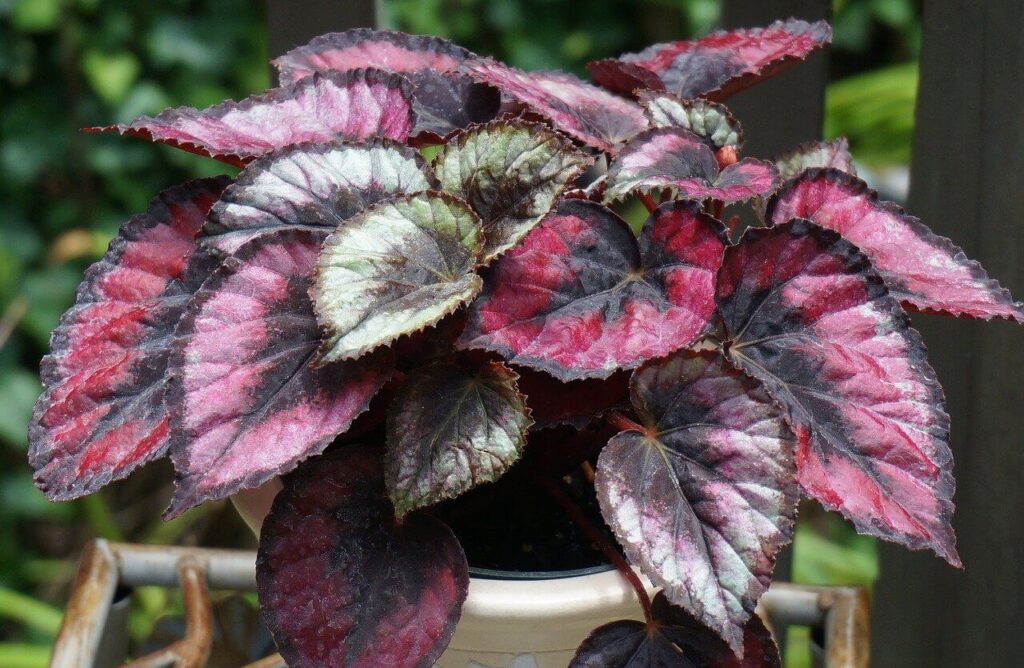
This is an especially convenient and easy way to propagate foliage-based varieties like Rex Begonias.
- Take begonia leaf cuttings in the summer when their growing season is just starting. Pick a healthy plant and cut the fresh, young leaves from the base of stalk using a sharp, sterilized knife.
- Keep the leaves on a clean cutting board and cut off the stalk.
- Make some gashes along the main vein closer to the base of the leaves.
- Place the leaves on the surface of the potting mix facing upward instead of downward.
- Pin them down with some pieces of wire or something similar to keep them in place.
- Keep the soil cool and moist, but not wet and soggy.
- Within a few weeks, young plants will erupt from the slashes you made along the vein.
From Stem Cuttings
- Take some mature stem cuttings from a healthy begonia plant.
- Cut them right below a node using a sharp and clean knife. They should be at least 4 inches (10 cm) in length.
- Remove any remaining leaves from the bottom half.
- Dip the end of the cuttings in water and then in hormone powder for faster rooting.
- Make holes in the potting soil using a stick or pencil and plant the cuttings in it.
- Press down the soil around the plants firmly to keep them steady and upright.
- Water well and place the containers at a sunny spot.
Transplanting Your Begonias
After the young begonia plants have developed their first pair of true leaves, it’s time to transplant them. If you’re planning to re-plant them outdoors, wait until the winter frost is over.
If you’re planting them in pots, choose medium-sized pots that are neither huge nor too small and ensure sure they have enough drainage holes. Containers made with non-porous materials like plastic are great for begonias as they will provide them with humidity.
Don’t plant young begonias just in soil alone. Mix equal parts of perlite, peat moss, and vermiculite with fertile, loose soil to make the growing medium.
When transplanting your begonias, use a spatula or a spoon to loosen the soil around the roots and lift the plant out carefully. Separate the plants and replant them in new the potting medium.
Make sure the plants are exposed to sunlight and water them well enough to keep them cool and moist.
Factors to Consider
When growing begonia plants, whether indoors or outdoors, there are some important factors you’d want to keep in mind:
Sunlight and Air
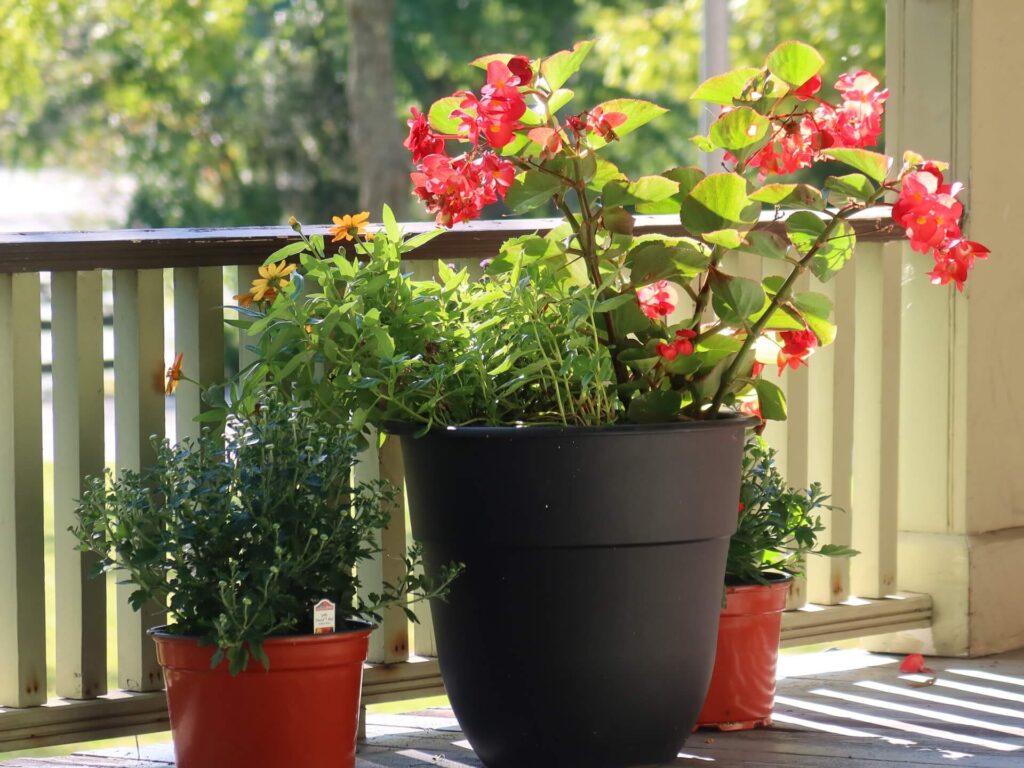
Begonias grow well in bright sunlight or partial shade. Provide them with 4 -6 hours of direct morning sun or bright filtered light per day. Some species of begonia are capable of tolerating full shade, but they will not grow or perform well as the plants that get bright sunlight. Insufficient exposure to sunlight can also affect flowering.
Begonias thrive with good ventilation and space to breathe. This helps prevent fungal diseases and infections as well.
Soil
Begonias love moist, well-drained soil with plenty of organic matter, so you can try using rich, sandy, or loamy soil for the potting mix. If the quality of the soil is poor, you can add some organic compost to improve it.
If your garden has heavy clay-like soil, grow your begonias in raised flower beds filled with topsoil and compost to improve the drainage and avoid waterlogging.
Temperature and Humidity
Begonias grow best in mild temperatures, around 15°C to 26°C (59-79 F). The ideal temperature for most begonia cultivators is 18 -20 Celsius (64-68 F) degrees with a minimum of 10 ℃ (50 F).
Begonias require a high humidity level of about 70 -90% in order to thrive. If you need to increase the humidity levels, you can keep your begonia pots on humidity trays or cover them with clear plastic bags for a few hours a day. Avoid misting as it can cause foliage diseases and problems like powdery mildew.
Caring and Maintenance
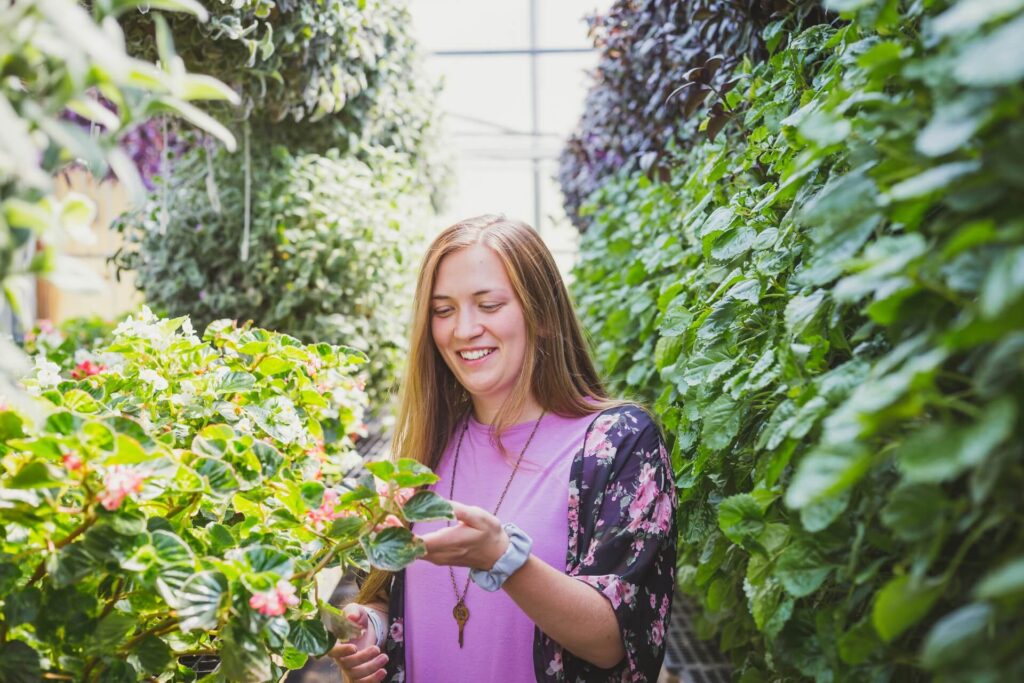
Watering
Always keep your begonias well watered but allow the soil to dry out between each watering. Water every 2 to 4 days and more frequently in warmer weather conditions. However, remember not to overwater the plants as it can cause the roots to rot or die.
Fertilizing
Feed your begonias with a mild fertilizer once a month throughout the growing season and fertilize lightly at the first few weeks of planting to avoid excessive foliage growth. In the flowering season, fertilize every 15 -20 days.
For foliage-based begonias use a fertilizer with a high nitrogen level as it helps to keep the leaves in their best condition.
Begonias are heavy feeders so you can feed them with a rich, organic balanced fertilizer mixture for additional nutrition. For container plants, use a liquid fertilizer to improve absorption.
Pruning and Deadheading
For better and fuller growth, prune fresh growth tips when they are about 3 -6 inches long using a sharp and sterilized tool. Remove any old and dried-up leaves as well and repeat this process monthly. To stimulate flowering, deadhead your begonias by cutting off old blossoms regularly in the blooming season.
If you’d like to know more about pruning, check out our article.
Pests and Common Problems
Whiteflies, spider mites, scales, and mealybugs tend to attack begonias, especially the plants that are grown indoors. You can try spraying the plants with a soap insecticide to control the infestations.
Some common diseases that affect begonia plants are root rot and powdery mildew. The main causes of these infections include soggy soil or poor drainage and wet foliage. Poor ventilation can cause disease problems in these plants.
If your begonia plants have decaying roots or an unpleasant smell, it could mean that they’re suffering from root rot. Small spots on leaves and flowers are signs of powdery mildew. One of the best remedies you can use on these plants is horticultural oil diluted with water.
Re-potting Your Begonias
Begonias that are planted in containers need to be repotted at least every 2 to 3 years. The purpose of repotting can be to provide them with bigger homes or new, fresh growing medium, or both. Although repotting can be done any time of the year, we recommend you to do it in the spring; at the beginning of their new growth.
Here’s how you can re-pot your begonia plants:
- First pull out your begonias carefully without damaging their roots.
- Remove all the residues of old potting soil. Try shaking the plants gently to get it all off, but remember to be GENTLE.
- For plants that need to be moved into bigger containers, choose pots at least 2.5 inches larger than the previous ones. If the purpose of repotting is solely to provide the plants with new soil, then you can use a pot that’s similar in size as the one before.
- Make sure the pots have enough drainage holes and use containers made with non-porous materials like plastic.
- Fill about half of the pots with new growing medium and place the plants in.
- Fill in the remaining space with growing medium again, but just enough to cover the roots.
- Once you’re done filling, press down the plants firmly to keep them steady and upright.
- Water just enough to keep the soil moist but not too wet.
Uses and Benefits of Begonias
Begonias aren’t only used as an ornamental plant but also for medicinal and culinary purposes. The leaves and flowers of some begonias are eaten raw or cooked in some countries. For instance, in Indonesia and Brazil, begonia flowers are used to garnish salads, soups, or sandwiches while in China, they’re mixed with milk in making cheese. The flowers are rich in vitamin C, so they have a citrusy sour taste similar to grapefruit. They can also be boiled with water and consumed as a beverage:
Begonias have various health benefits including the following:
- Good for the digestive system
- Makes the skin glow
- A good medicine for cough
- Improves bone and teeth growth
- Great for treating bronchitis
- An anti-bacterial drug
- A cure for menstrual disorders
The Take-Away
Planting begonias is an excellent way to decorate any outdoor garden or even inside your home. Their flowers have a longer lifespan than many other natural blooms giving you a long-lasting flowering experience. If you’re looking for something to add color to your garden or brighten your living area, the begonia could be just the plant for you!



